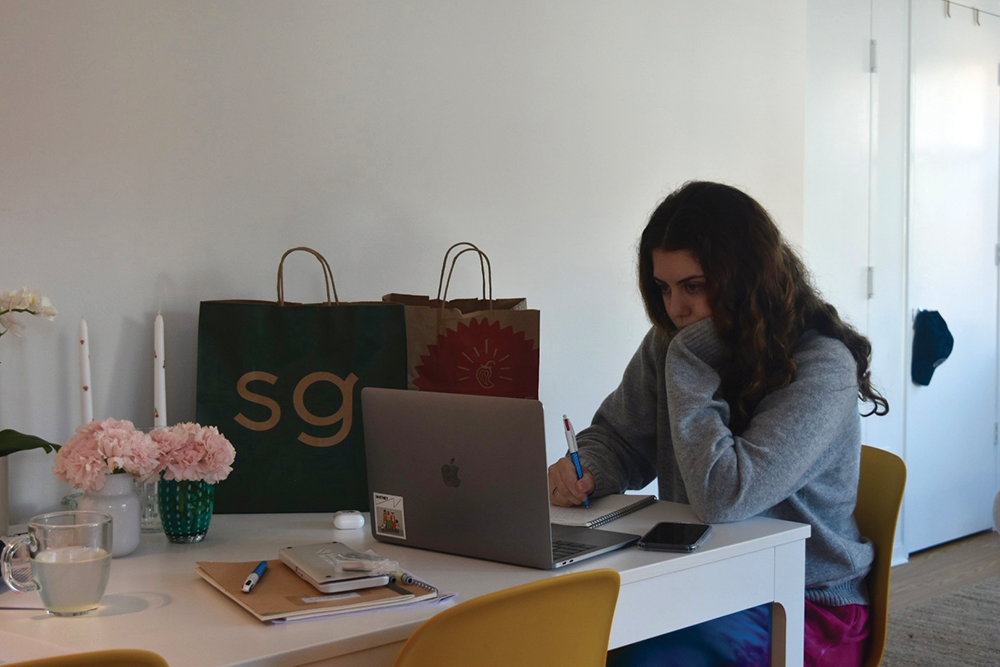Georgetown University students are working to combat food insecurity within the university community by implementing a new program to provide resources to graduate and undergraduate students living in the Washington, D.C. area amid the ongoing COVID-19 pandemic.
Students Advancing Food Equity, an undergraduate student group seeking to alleviate food insecurity in the Georgetown community, launched the Georgetown Neighborhood Food Rescue Service on Feb. 16. The program allows any graduate or undergraduate student living on or off campus to request a food delivery from SAFE. Food is collected from local restaurants and businesses that have excess products, according to Madison Dyer (NHS ’22), president of SAFE.

This semester, SAFE is focusing more of its efforts on off-campus students as students living on campus have access to Georgetown dining options, according to Dyer.
“Luckily Georgetown has done a really great job of supporting the students on campus this semester. As a result, SAFE is trying to switch gears to try and support kids off campus,” Dyer said in a Zoom interview with The Hoya.
This semester, the university required all students living on campus to purchase an All-Access meal plan, which includes unlimited meal swipes at Leo J. O’Donovan Dining Hall. The Corp has also reopened two locations, offering more food and grocery options to students living on campus.
While SAFE is allocating more resources to students living off campus, on-campus students also benefit significantly from SAFE’s new program, according to Christina Ruder (SFS ’23), who lives on campus.
“SAFE’s new Neighborhood Rescue program ensures a steady food source for students on campus during these winter months,” Ruder wrote in an email to The Hoya. “Students who typically find it difficult to prepare meals themselves will be provided meals at no-cost. Students can save money and eat better.”
SAFE, which was founded in 2019, has primarily worked with the Hoya Hub, an on-campus pantry offering free, non-perishable food and personal hygiene items to Georgetown community members.
While the Hoya Hub and SAFE are separate organizations, many of SAFE’s food collections are used to continually restock the Hoya Hub pantry, so students in need always have nutritious options available to them.
SAFE has recently expanded its services during the COVID-19 pandemic to include Neighborhood Food Rescues. The program offers students in the D.C. area free food delivery from SAFE. Food is donated by local restaurants or businesses and re-distributed among the Georgetown community, according to Dyer.
“Over the last year, we have become such a prominent effort in the D.C. area,” Dyer said. “Local restaurants have started reaching out to us to donate their extra goods.”
Levain Bakery and Boulangerie Christophe have both actively contacted SAFE members and notified them about extra food or meals SAFE has distributed to students through Neighborhood Food Rescues, according to Dyer.
To request a Food Rescue, SAFE asks students to fill out an anonymous electronic form detailing their current address and dietary needs, and members will deliver food to their doorstep, according to Dyer.
A 2016 survey conducted by the Georgetown University Student Association found that 54% of 351 students surveyed experienced food insecurity on campus at least once a week.
The university continues to support and assist students struggling with food insecurity, according to a university spokesperson.
“Georgetown is committed to supporting students with food insecurity and the University meets the full needs of students who require financial assistance paying for college, including tuition, housing and meal expenses,” the spokesperson wrote in an email to The Hoya. “For the duration of the COVID-19 pandemic Georgetown has supported students with housing and food insecurity on campus.”
Georgetown has moved the Hoya Hub food pantry to the Village A Community Room kitchen to make it more accessible to on-campus students and has facilitated the “Swipe Out Hunger” program, the Georgetown chapter of a national initiative aiming to end food insecurity, according to the spokesperson.
However, students experiencing food insecurity still need more support and SAFE fills that gap. In addition to organizing Food Rescues, SAFE also raises awareness about food-related and nutrition issues, according to Julianne Licamele (COL ’21), one of SAFE’s founders.
“We created SAFE with the goal of supporting the Hoya Hub’s mission on a larger level while also addressing other aspects of food insecurity,” Licamele wrote in an email to The Hoya. “Part of the mission of SAFE is to run programming to spread awareness.”
SAFE shares statistics about food insecurity and nutrition, recipes and information about the organization’s operations through social media, according to Licamele.
“On a basic level, this program has not only provided resources for students who are food insecure, but has spread awareness that these students exist in the first place,” Licamele wrote. “I could not be prouder of where the project has ended up.”




















